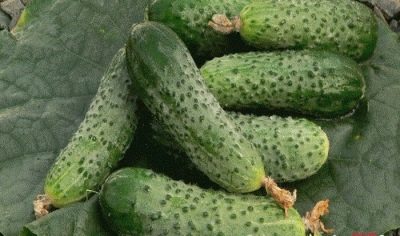
- Authors: German selection
- Fruit weight, g: 90-110
- Fruit length, cm: 8-10
- Ripening terms: early
- Pollination: bee-pollinated
- Fruit shape: cylindrical
- Fruit taste: no bitterness
- Appointment: for pickling and preserving, for fresh consumption
- Pulp (consistency): dense, crispy, juicy
- The number of days from germination to fruiting: 50-55
Bidretta is a hybrid variety of German cucumbers. In Russia, the variety is not so popular, however, gardeners who tried to grow a guest from Germany in a Russian dacha highly appreciate its taste and marketability. Let's tell you more about the features of the hybrid.
Description of the variety
The presented variety is considered productive, however, compared to other hybrids, this indicator is still not so significant. Also, a feature of the variety is the impossibility of collecting seeds for planting for the next season, so planting material must be bought every year. But Bidrette is excellent for growing for sale due to its commercial and transportable qualities.
Characteristics of the appearance of plants and zelents
The bush has medium lashes and short cylindrical fruits only 8-10 cm long and weighing 90-110 g. Zelentsy are covered with small tuberous dense skin. This is a bee-pollinated variety, so the bushes are grown only outdoors.
Purpose and taste of fruits
Cucumbers have a pleasant, sweet taste without bitterness. The pulp is dense, crispy, juicy. The fruits are perfect for fresh consumption, they will emphasize the light delicate taste of vitamin salad, and can also be suitable for pickling and canning.
Maturation
The first fruits are formed within 50-55 days after germination, which is typical for varieties with an early ripening period.
Yield
The variety is productive, from each square meter, subject to the rules of agricultural technology, you can get 4-5 kg of cucumbers.
Landing scheme
Sowing for seedlings is carried out in April-May. Seedlings are transplanted into open ground in May-June, during the same period they sow seeds on the site if you want to immediately grow a crop in open ground, while it is important that the temperature is set at +22 degrees.
Before sowing, the seeds should be prepared, namely, disinfected in potassium permanganate, then processed in a growth stimulator. The grains are buried in the finished substrate to a depth of 1.5 cm and wait for the emergence of seedlings. When the first shoots hatch, you need to set the temperature in the room within + 20 ... +25 degrees, and also maintain at least 12-hour daylight hours, for this it is allowed to use phytolamps. On the 6th day after the emergence of shoots, the seedlings can be watered for the first time.
About a week before the planned transplant, the sprouts can begin to harden, for example, reduce the temperature in the room to +16 degrees. Planting is carried out in a pre-moistened fertile soil with high aeration according to the scheme of 3-4 bushes per square meter, that is, 30x70 cm.
Growing and care
When growing, pay special attention to the following steps.
• Watering.
It is carried out every 2-3 days in the early morning or late evening. For humidification, warm settled water is used. In drought, the frequency of watering should be increased. It is recommended to periodically spray the leaves from a spray bottle, as well as add carbamide to the water to accelerate growth and prevent some diseases.
• Top dressing.
It is carried out every 10 days with a solution of manure and urea. Also use complex mineral formulations in combination with organics.
• Garter and shaping.
To strengthen the main stem, the side shoots must be loosened. When the main stem of the hybrid has grown to 1.5m, it should be pinned to a wire. Thus, fruits will appear on the upper ovaries, and the lower ones will not rot.
• Hilling.
For oxygen to penetrate to the root system, the garden bed must be spud and loosened every 2-3 days. It will also speed up growth and prevent root-damaging insects.

In order to collect strong, tasty and beautiful cucumbers on your site, you need to make top dressing. Lack of nutrients can negatively affect the appearance of the plant and significantly reduce the yield. Fertilize cucumbers with organic fertilizers in combination with mineral fertilizers. With the right balance of these components and adherence to the fertilizing schedule, the cucumber yield will be maximum.
Disease and pest resistance
The presented variety is resistant to disease damage, even such common ones as powdery mildew and cladosporiosis. The German hybrid also tolerates unfavorable weather conditions, but occasionally it can be affected by aphids and ants. Soap solution helps from the first pest, and wood ash helps from the second.
As a preventive measure, regularly inspect the bushes for the presence of parasites, keep the area clean, loosen the ground after watering, plant onions and garlic next to the ridge - the smell of these crops scares off pests.

Despite their popularity, cucumbers are often attacked by diseases and pests. From them, cucumber plantings often die before the start of fruiting. In order to prevent this from happening, it is necessary to try to prevent ailments or get rid of them at the very beginning, having studied in detail their causes of occurrence, signs and methods of treatment.





























































































